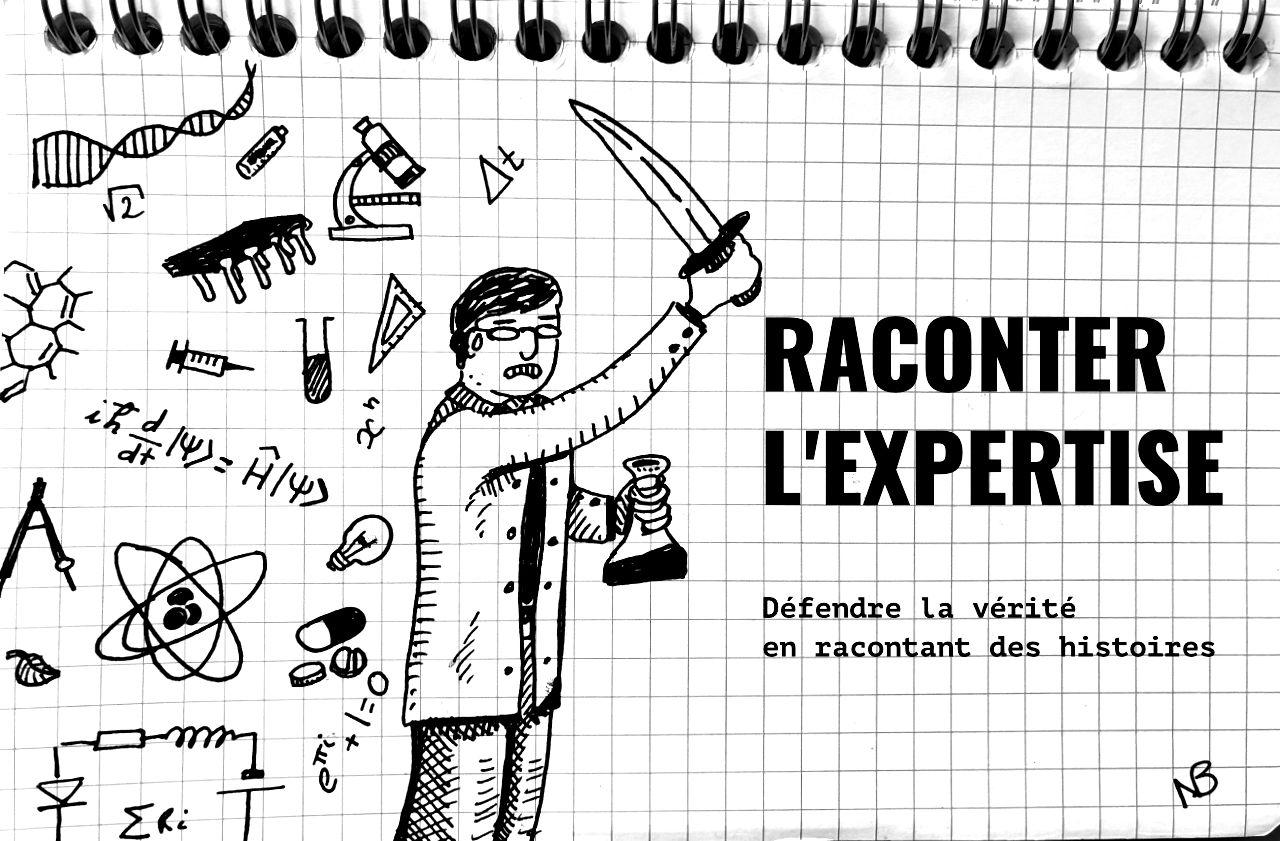If you're an expert in a scientific or technical field, this is the story you should tell to connect with your target audience and sell your innovation.

Storytelling & Narrative Structure
First, understand this: a story is a transformation.
It's the journey from state A (before, the past, the problem) to state B (after, the future, the solution). No transformation, no story. No story, no emotional connection.
Next, understand that a story always happens to a protagonist. This is an agent who can say "I" or "we" and who intimately experiences this transformation. It's with this protagonist (a person, a company, or a project team) that the audience will form a connection.
For this reason, your technology or innovation can NEVER be the protagonist of your story.
Here’s why:
- Your technology evolves, but your story must be enduring.
- Anyone working with similar solutions could tell the same story.
- It's the emotional account of this transformation (as told by a human or a group) that creates the connection.
With that in mind, here is what I believe to be the ideal narrative structure for selling (in the broadest sense) expertise, an innovation, or a technology:
"Because we went through a specific, profound, and defining transformation (which you'll tell), we have become the best at guiding you through the transformation that will change everything for you (which you'll specify)."
In other words:
- Your target audience is seeking less a product or a service than a profound transformation: moving from state A (failure, stagnation, difficulty) to state B (growth, ease, success).
- You, the expert or the company, have become the best to guide them because you have undergone a similar (though not identical) transformation: from state A (standard solutions, partial understanding) to state B (excellence, the best in the market for a given problem).
The ideal story, therefore, links your journey to your expertise by telling what challenges made you so incredibly effective at helping your target audience. This structure hits the mark for two reasons:
Connecting with Your Audience
First, because it answers the prospect's two fundamental questions:
- What concrete problem do you solve for me? (Answer: I guide you through the transformation that will enable you to achieve the growth you're looking for.)
- Why should I trust you? (Because we ourselves went through an evolution that allowed us to develop the best solutions.)
Second, by linking your journey to solving their problem, you capture your audience's interest in your story.
Understand that your audience isn't initially interested in your story: they are focused on their own situation and their own problems—the ones they need to solve to move forward. The story of your journey only becomes relevant to them insofar as it's directly linked to the solution they're seeking.
Hence the importance of selecting and ordering the elements of your journey to create this link.
This is the main pitfall I observe in scientific or technical professions: people explain (the technology, the journey, the data) instead of selling (in the broad sense). And these are two very different types of discourse.
Specifically, scientific or technical narratives often suffer from the following biases:
- Too focused on technical solutions
People explain the solutions instead of telling the story that justifies their relevance and utility. There's no emotional anchor for the audience, so the comparison with competitors is based entirely on technical specifications—which change and are often hard to judge. The result: no long-term competitive advantage. - No personal/organizational story
People hide behind "objective" science and technology, leaving aside the "subjective" human story that is absolutely necessary to create a connection. If the science is the same for everyone, why should your audience trust you? - A story disconnected from the solution
People tell a rich (sometimes sprawling) story where the elements that might interest the audience are drowned in a sea of irrelevant events, diluting the message's effectiveness. Your story must be highly targeted: it contains the elements that hit the mark, and nothing else. - Relentless positivity
People highlight successes while brushing aside mistakes and difficulties to project a positive image. Without the story of the obstacles that allowed you to become the best in your field, your audience will struggle to believe in the superiority of your solution.
On the topic of positivity, you must understand this: there's no good story without a hero and a dragon.
So, not only must you talk about one or more obstacles you have faced—or are currently facing—but the bigger these obstacles are, the more your audience will believe in the value you gained from the battle.
The more dangerous the dragon, the more valiant the hero.
So, to stick with legendary tales, the goal is to move from a purely descriptive pitch that sounds like this:
"Look how beautiful my sword is! The handle is made of X. The blade is made of Y. It was forged by Z on the plains of XYZ! It's the strongest and most effective. In fact, its wind resistance equation is (...). You'll find its statistical report in Appendix A, and you'll see that in 74% of cases (...) Do you want to buy my sword?"
To a story that sounds like this:
"One day, my village was attacked by three dragons. To protect my family, I forged this sword, and with it, I defeated them. Do you want me to forge one for you?"
The goal is to find the equivalent of this story in your industry—without the magic or mythological creatures. If you choose to work with ChezFilms, here's how it will unfold:
The "Narrative Strategy" Process
The goal of the Narrative Strategy meetings is to analyze your journey and your solutions to find the three to five key elements needed to tell your story—the one that will connect with your target audience.
This service is delivered in two stages:
- Immersive interviews
We conduct one or more individual interviews with key members of your organization, during which we ask you questions about your journey, your goals, and the problems you face. - Roadmap Presentation
After a period of analysis, we present the proposed solutions in the roadmap during a new meeting (which can be a group session).
This roadmap contains:
- Key considerations and advice: points and directions to optimize in your current communication and how to address them.
- Key journey elements: three to five key elements from your journey and their relevance for convincing your target audience.
- Narrative directions: One or two ways to order and present these elements to tell a powerful story that will guide the rest of your communication.
The value of our approach lies in the questions we ask in the first phase, and then in the elements of your journey that we select in the second phase to build a strong story.
This process serves as the foundation for your communication:
- Because it comes from your journey, this narrative direction is aligned with your history and values, making it easier for you and your teams to tell.
- It provides strategic direction for your communication before you invest in larger actions, such as producing content or events.
- Once you are familiar with this process, it becomes easier to evolve your story internally to adapt to changing circumstances.
Once the narrative strategy is set, we can organize "Public Speaking" workshops to adapt the message for different situations: presentations, interviews, trade shows, etc. It also becomes the foundation and direction for your content when you move on to the audiovisual production stage.
Have a doubt, a comment, or a question? Don't hesitate to contact us.
